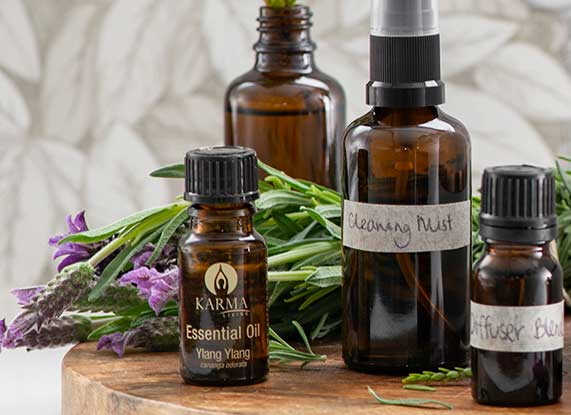
Essential oils have become very popular, but they are nothing new, People have been benefitting from their uses for millennia. What is new, is our ability to learn about and access the properties more effectively.
Essential oils are the essence of a plant product. It takes special techniques to harvest these elements from raw materials. It is both a science and an art. The techniques are a mix of ancient and leading-edge technology. Here are the three main methods of collecting essential oils.
Distillation by Steam:
Steam distillation is a very common method of separating materials. Including those with special properties found in pure essential oils. The objects are heated with steam until the exact temperature is reached where the components begin to separate into desired components. Steam is useful because of the energy available in steam makes the heating of elements possible without instigating combustion. It is also a good method for microbial purification. Oils extracted by steam are perfectly sterile and therefore more stable.
Cold Pressing:
Cold pressing is a purely mechanical process; it is advantageous for accessing an element that is sensitive to heat. When a material’s integrity and potency is preserved, the efficacy and the health benefits are increased. The material being pressed can be any part of a plant. Roots, bark, leaves, flowers, and seeds are all used, depending on the essence that is being extracted. Early methods of pressing involved screw type machinery that compressed the material, which was then collected by sponges. Today’s machines are more sophisticated, and they use various kinds of mechanical teeth and centrifugal force to separate the desired materials.
Solvent Extraction:
Solvent extraction is a process to acquire compounds that cannot be accessed by steam or by pressing. This process is often used for flowers like Jasmine, Carnation, Mimosa, and Gardenia. And the process includes the use of chemical such as ether, methanol, or ethanol. This is not a mechanically complicated process, but it does come with some drawbacks. The materials acquired through this process, while very effective, are not pure, because they have acquired some of the compounds used in the process. For this reason, the oils created in this fashion are not true essential oils, but they are still very effective in their own right.
Regardless of the method, the benefits of essential oils are multifold.
Whether you use them for aromatherapy, for skin care, cleaning, or just enjoying the fragrance. There is a treasure trove of beneficial effects that can be released from these concentrated treasures.
Distillation by Steam:
Steam distillation is a very common method of separating materials. Including those with special properties found in pure essential oils. The objects are heated with steam until the exact temperature is reached where the components begin to separate into desired components. Steam is useful because of the energy available in steam makes the heating of elements possible without instigating combustion. It is also a good method for microbial purification. Oils extracted by steam are perfectly sterile and therefore more stable.
Cold Pressing:
Cold pressing is a purely mechanical process; it is advantageous for accessing an element that is sensitive to heat. When a material’s integrity and potency is preserved, the efficacy and the health benefits are increased. The material being pressed can be any part of a plant. Roots, bark, leaves, flowers, and seeds are all used, depending on the essence that is being extracted. Early methods of pressing involved screw type machinery that compressed the material, which was then collected by sponges. Today’s machines are more sophisticated, and they use various kinds of mechanical teeth and centrifugal force to separate the desired materials.
Solvent Extraction:
Solvent extraction is a process to acquire compounds that cannot be accessed by steam or by pressing. This process is often used for flowers like Jasmine, Carnation, Mimosa, and Gardenia. And the process includes the use of chemical such as ether, methanol, or ethanol. This is not a mechanically complicated process, but it does come with some drawbacks. The materials acquired through this process, while very effective, are not pure, because they have acquired some of the compounds used in the process. For this reason, the oils created in this fashion are not true essential oils, but they are still very effective in their own right.
Regardless of the method, the benefits of essential oils are multifold.
Whether you use them for aromatherapy, for skin care, cleaning, or just enjoying the fragrance. There is a treasure trove of beneficial effects that can be released from these concentrated treasures.
| < Prev | Next > |
|---|




